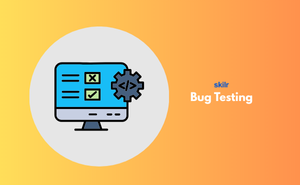👇 CELEBRATE CLOUD SECURITY DAY 👇
00
HOURS
00
MINUTES
00
SECONDS

Bug testing, also known as software testing or quality assurance, is a process used to identify defects or "bugs" in software before it is released to the end user. This process involves running the software in a controlled environment and systematically testing it to uncover any issues that may affect its functionality, usability, or performance. Bug testing is essential for ensuring that software meets quality standards and is free of errors that could impact user experience. It typically involves a combination of manual testing, where testers manually execute test cases, and automated testing, where testing is performed using automated tools. The goal of bug testing is to identify and fix bugs early in the development process, reducing the cost and time required for fixing issues later on.
Why is Bug Testing important?
Who should take the Bug Testing Exam?
Bug Testing Certification Course Outline
Introduction to Software Testing
Software Development Life Cycle (SDLC)
Testing Fundamentals
Test Design Techniques
Test Execution and Reporting
Defect Management
Test Automation
Performance Testing
Security Testing
Mobile Testing
Agile Testing
Test Management
Quality Assurance and Continuous Improvement
Case Studies and Practical Applications
Ethical and Legal Considerations
Industry-endorsed certificates to strengthen your career profile.
Start learning immediately with digital materials, no delays.
Practice until you’re fully confident, at no additional charge.
Study anytime, anywhere, on laptop, tablet, or smartphone.
Courses and practice exams developed by qualified professionals.
Support available round the clock whenever you need help.
Easy-to-follow content with practice exams and assessments.
Join a global community of professionals advancing their skills.
(Based on 136 reviews)
• Ability to create reports
• Testing ability
• Attentiveness
• IT skills
A bug in software is basically an issue, fault, error or failure. Generally, it occurs when developers make any error or mistake during the development of the product. Such bugs may lead to an unexpected result that doesn’t meet the requirements of a business.
• Defining a bug
• Understanding the flow diagram for a bug
• Characteristics of a bug
This exam is best-suited for-
• IT professionals
• Software developers
• Web programmers
• Students and graduates
• Other interested candidates
• Detection of a bug
• Prevention of bugs
• Enhancing ROI
• Improving customer service